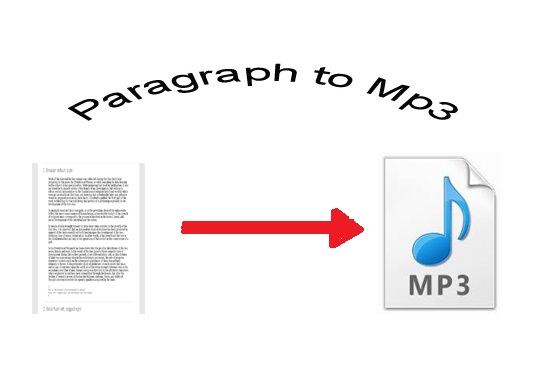

- #Turn audionote into mp3 how to
- #Turn audionote into mp3 install
- #Turn audionote into mp3 code
- #Turn audionote into mp3 free
getframerate (), output = True ) # Read data in chunks data = wf. Stream object to write the WAV file to # 'output = True' indicates that the sound will be played rather than recorded stream = p. open ( filename, 'rb' ) # Create an interface to PortAudio p = pyaudio. Import pyaudio import wave filename = 'myfile.wav' # Set chunk size of 1024 samples per data frame chunk = 1024 # Open the sound file wf = wave.
#Turn audionote into mp3 code
The following code can be used to play a WAV file with pydub: simpleaudio is strongly recommended, but pyaudio, ffplay, and avplay are alternative options. pydubĪlthough pydub can open and save WAV files without any dependencies, you need to have an audio playback package installed to play audio. With the right dependencies installed, it allows you to play a wide range of audio files, and it offers you more options for working with audio than python-soundevice does.
#Turn audionote into mp3 how to
Next, we’ll learn how to use pydub to play sound. The line containing sf.read() extracts the raw audio data, as well as the sampling rate of the file as stored in its RIFF header, and sounddevice.wait() ensures that the script is only terminated after the sound finishes playing. wait () # Wait until file is done playing

read ( filename, dtype = 'float32' ) sd. Import sounddevice as sd import soundfile as sf filename = 'myfile.wav' # Extract data and sampling rate from file data, fs = sf.
#Turn audionote into mp3 install
(With pip installed, you can do this by running pip install numpy from your console.)įor more information on how to use pip for installing packages, have a look at Pipenv: A Guide to the New Python Packaging Tool.īelow you’ll see how to generate a NumPy array corresponding to a 440 Hz tone and play it back using ay_buffer(): Make sure you have NumPy installed for the following example to work, as well as simpleaudio. Simpleaudio allows you to play NumPy and Python arrays and bytes objects using ay_buffer(). For more information on how to work with NumPy, have a look at our NumPy tutorials. For a bytes object, each sample is stored as a set of two 8-bit values, whereas in a NumPy array, each element can contain a 16-bit value corresponding to a single sample.Īn important difference between these two data types is that bytes objects are immutable, whereas NumPy arrays are mutable, making the latter more suitable for generating sounds and for more complex signal processing. To reduce file size, it may be sufficient to store some recordings (for example of human speech) at a lower sampling rate, such as 8000 samples per second, although this does mean that higher sound frequencies may not be as accurately represented.Ī few of the libraries discussed in this tutorial play and record bytes objects, whereas others use NumPy arrays to store raw audio data.īoth correspond to a sequence of data points that can be played back at a specified sample rate in order to play a sound. WAV files contain a sequence of bits representing the raw audio data, as well as headers with metadata in RIFF (Resource Interchange File Format) format.įor CD recordings, the industry standard is to store each audio sample (an individual audio datapoint relating to air pressure) as a 16-bit value, at 44100 samples per second. wait_done () # Wait until sound has finished playing

from_wave_file ( filename ) play_obj = wave_obj. Import simpleaudio as sa filename = 'myfile.wav' wave_obj = sa. Let’s have a look at these libraries for audio playback one by one. Pydub requires pyaudio for audio playback, but with ffmpeg installed, it lets you play a large range of audio formats with only a few lines of code. Python-sounddevice and pyaudio provide bindings for the PortAudio library for cross-platform playback of WAV files. Winsound allows you to play WAV files or beep your speakers, but it works only on Windows. Simpleaudio lets you play WAV files and NumPy arrays, and gives you options to check whether a file is still playing.

It offers no functionality other than simple playback. Playsound is the most straightforward package to use if you simply want to play a WAV or MP3 file. All of the libraries below let you play WAV files, some with a few more lines of code than others: A few of these libraries let you play a range of audio formats, including MP3 and NumPy arrays. Playing Audio Filesīelow, you’ll see how to play audio files with a selection of Python libraries.
#Turn audionote into mp3 free
Free Download: Get a sample chapter from Python Tricks: The Book that shows you Python’s best practices with simple examples you can apply instantly to write more beautiful + Pythonic code.


 0 kommentar(er)
0 kommentar(er)
